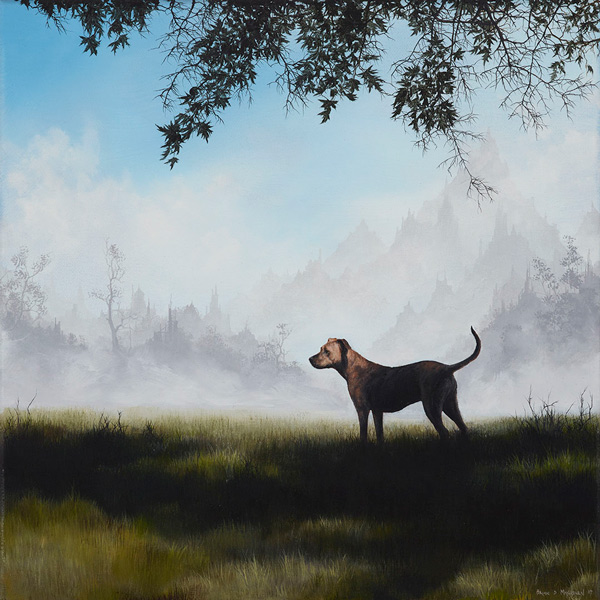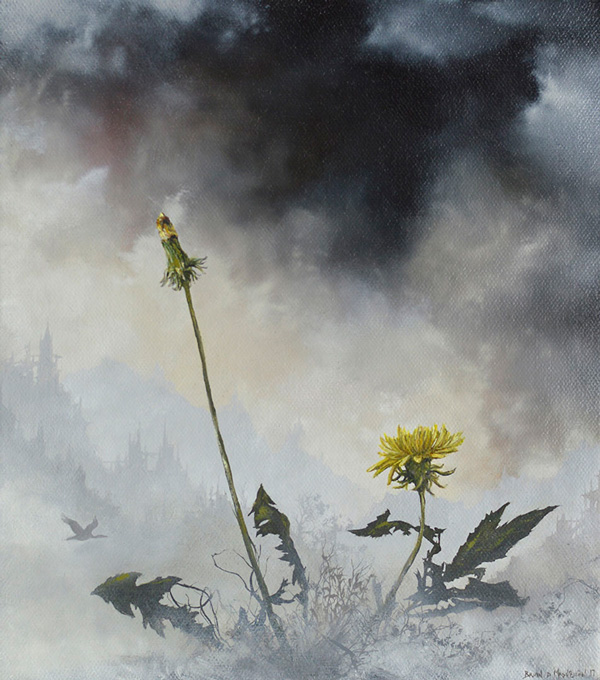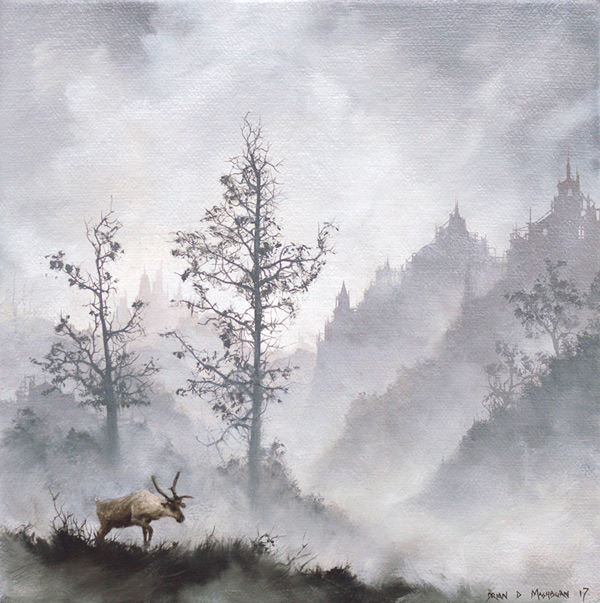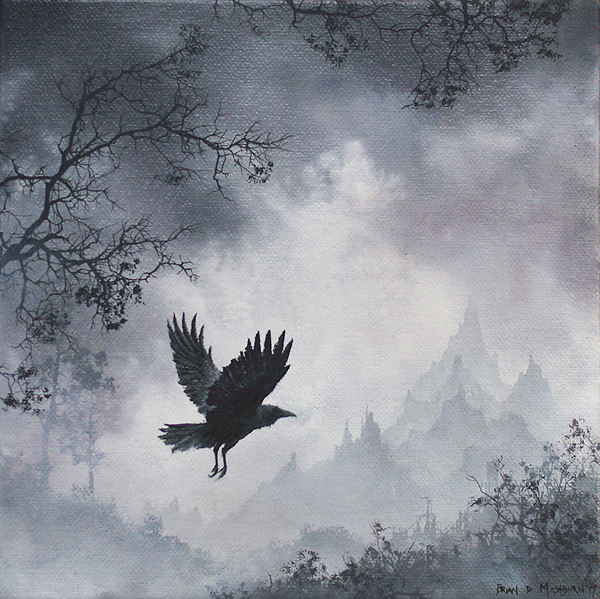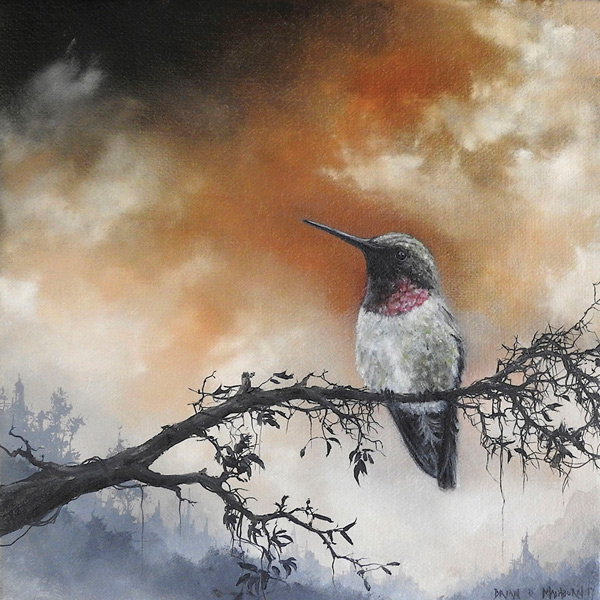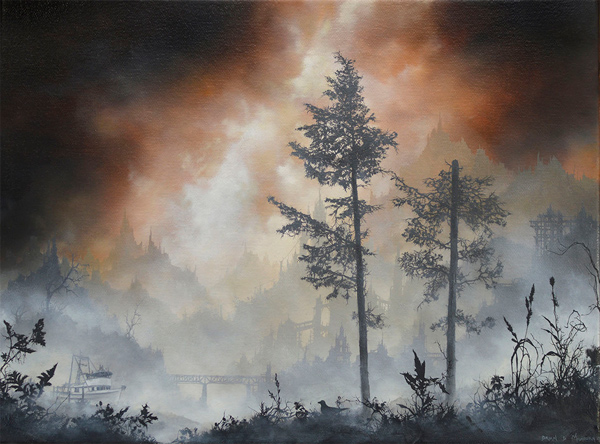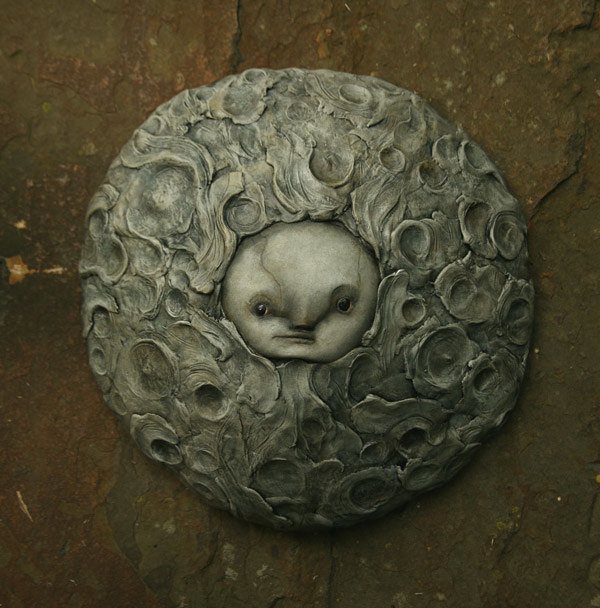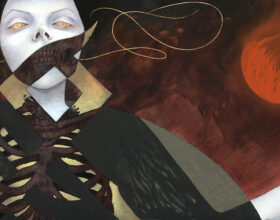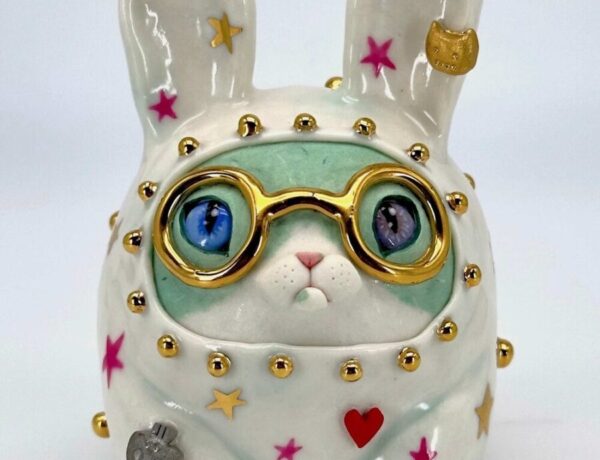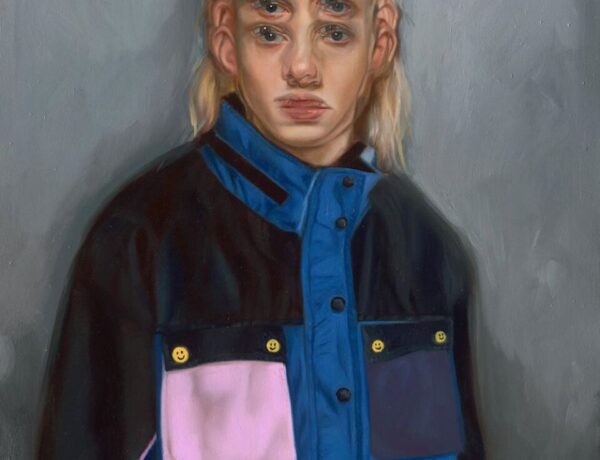Haven Gallery (Northport, NY) presents three concurrent solo exhibitions featuring the works of Matt Dangler, Scott Radke, and Brian Mashburn. Recently, I got the opportunity to ask them a series of questions about their current exhibitions, working processes, and general perspectives about art. Short though these mini-interviews are, their answers give me deeper insights that enable me to see they pieces they create in new lights.
Matt Dangler “The Hidden Ones”
Scott Radke “Home at Last”
Brian Mashburn “Overburden”
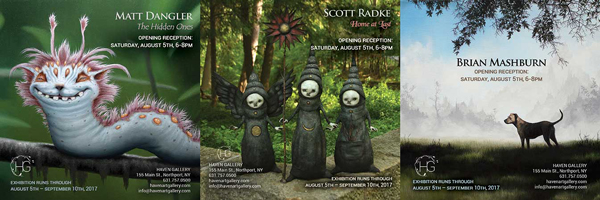
Exhibition Dates:
August 5 – September 10, 2017
Haven Gallery
155 Main St., Suite 4
The Carriage House Square | Northport, NY 11768
Hours of Operation:
Wednesday – Sunday | 12pm– 6pm
For additional information and preview images, please contact Erica at [email protected]
Matt Dangler “The Hidden Ones”
Will you tell us the overall concept of the show and your typical working process?
When I go into a show’s work, I’ve learned that it’s best for me to let it run parallel with whatever I’m experiencing so the content can unfold on its own. “The Hidden Ones” came from a place of love, which influenced the art by expressing lighter stories, vibrant colors, surreal characters, and so on. I like thinking of the characters in the show as expressive manifestations, opposed to being physical creatures… hence, where I came up with the title.
What’s the most important aspect of your work? What are the things you put particular attention and time on when you create your work?
The most important aspect of my work, is letting it come from a genuine place. Some creations are more “raw” than others, but I always want them to be genuine. So I give a lot of focus on creating an optimal environment to work in, where the art flows naturally… anything forced loses hope of a transcendental quality.
The painting technique I use also enhances the clarity of expression, through many thin translucent layers. These layers help the purity of colors, subtle nuances, and gives room for natural light to interact with the paint… overall with the viewer. A focus on detail brings it all together.
What’s the most defining moment in your art career?
There hasn’t been one stand out defining moment really, but many epiphanies and break-throughs do happen. I think this is because art making has always been very obsessive and personal to me. Most of the value comes with my own inner triumphs… not the outer recognition.
The sacrifices made for art have been more then I can even say, so it’s often very humbling. Seeing the art well received, the personal stories about how the art is experienced, and the mystifying red dots on title cards in a show have defined that I must be doing something right.
What is art, and what does it personally mean to you?
Art becomes art when the outer and inner are balanced; consciousness in harmony. Fiercely present and unmistakably genuine.
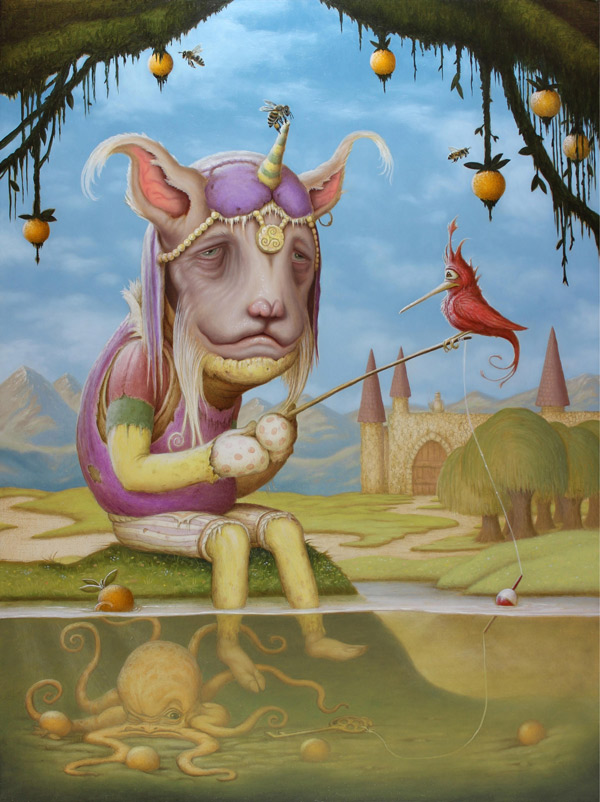

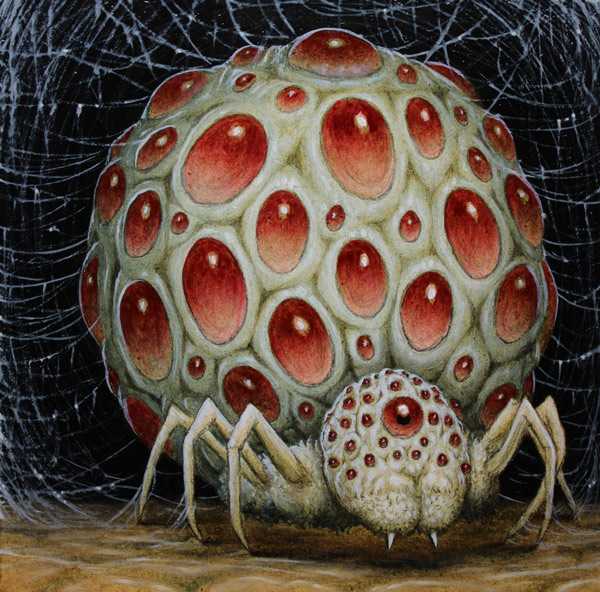
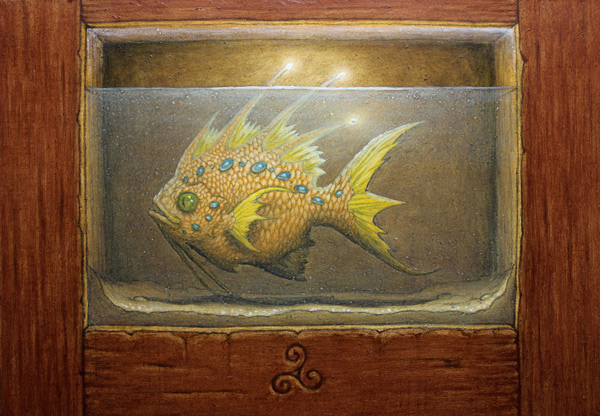
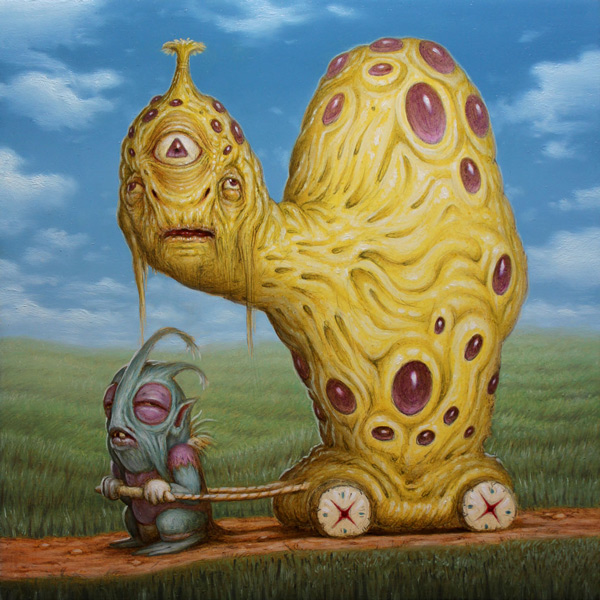
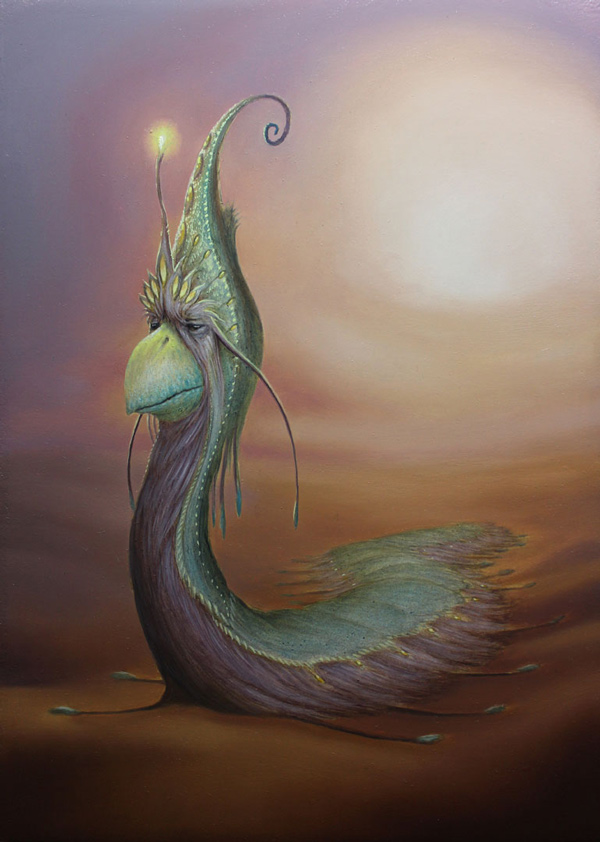

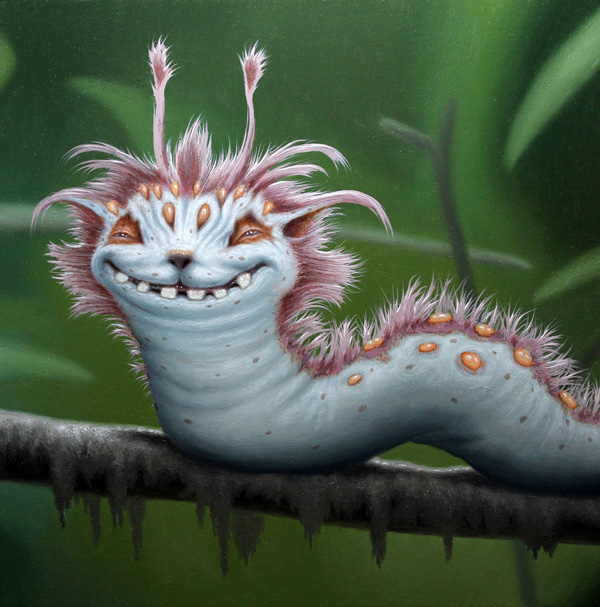
Scott Radke “Home at Last”
Will you tell us the overall concept of the show?
For this show, I went with some personal things I have been dealing with in my life and just kept that feeling inside while I created. Nothing is really literal but has a background filled with whatever emotions I am going through. Somehow, that gets out into my work, I guess. I’m not really sure about that, but it does motivate and move me to create so it has to be in there in some way.
What is your typical working process?
Sometimes I do a little sketch, start making faces, and when I find the one that feels right I build off of that. Sometimes it becomes like the sketch, sometimes it goes in its own direction.
What’s the most important aspect of your work? What are the things you put particular attention and time on when you create your work?
I would say what is in the facial expressions, eyes. Really I just try to get emotions or feelings out. Emotions that I have a very hard time expressing with words. I think the strongest pieces have that element.
What’s the most defining moment in your art career?
I suppose it’s when I quit my job in 1998 and dove into it 100 percent. Just being able to do what I love is the best gift I could ask for and I don’t take it for granted, ever.
What is art, and what does it personally mean to you?
I think art is just life – whatever it is you do with all your heart, what you give to the world – and that can be absolutely anything.

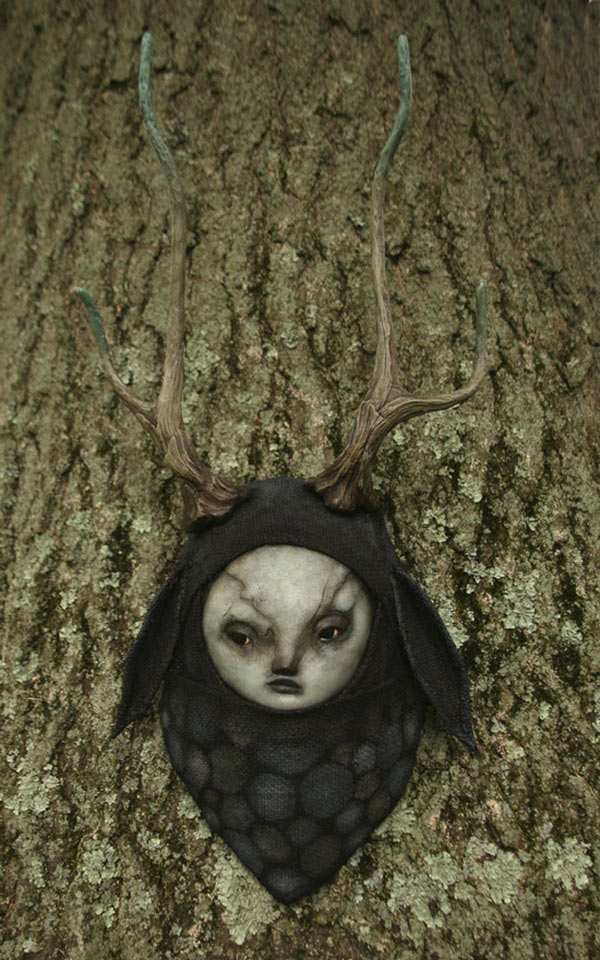
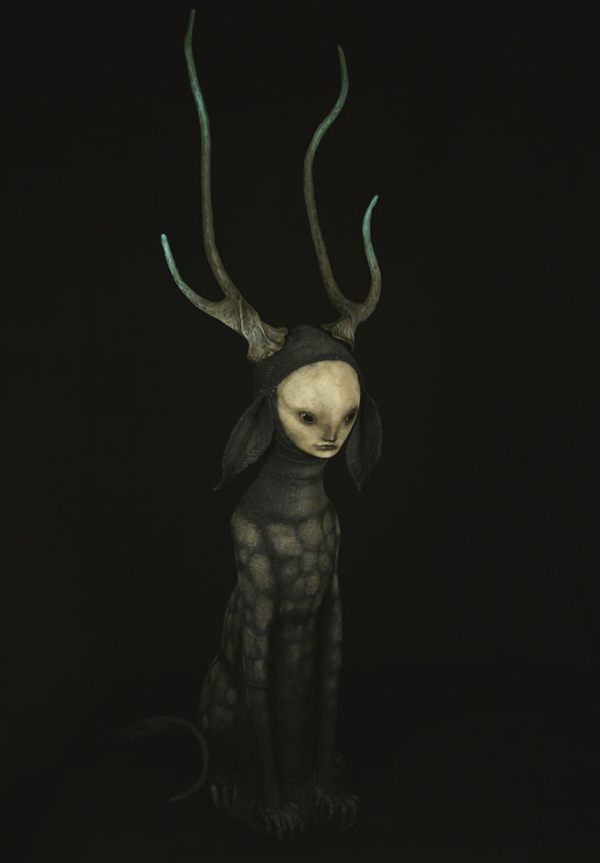


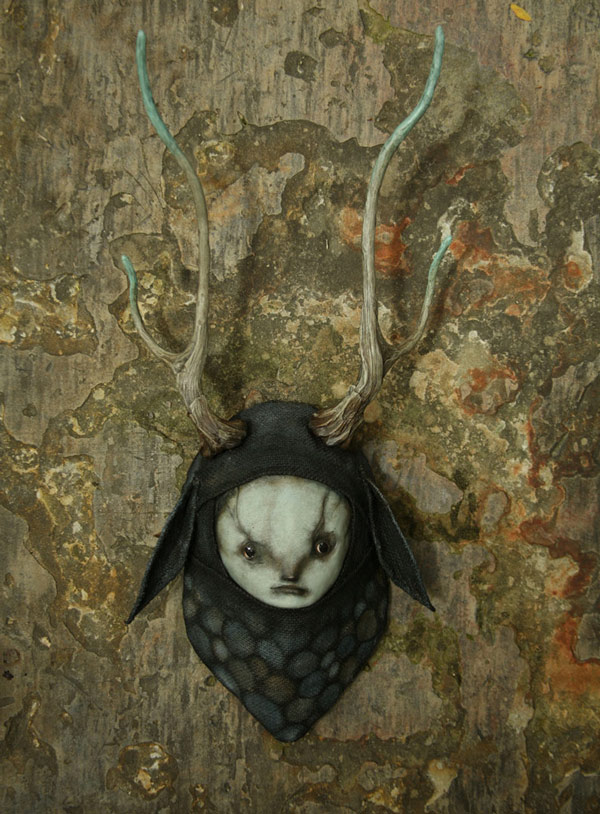
Brian Mashburn “Overburden”
Will you tell us the overall concept of the show?
The title of the show is ‘Overburden’. In mining, particularly surface mining, such as open-pit and mountaintop removal practices, the overburden is the layer of material lying above the coal seam, gold-bearing dirt, or whatever is being dug up for sale. The term implies a notion of entitlement with regard to land usage, a sort of manifest destiny-like belief that man can and should subjugate nature.
That being said, I don’t intend this work to be a flat out condemnation, but rather a representation of interaction and imbalance. After all, we are of nature ourselves and we (humans) do have a place in the ecosystem.
In The Unsettling of America Wendell Berry states: “Sooner or later in his behalf – whether he approves or understands or not – a strip miner’s bulldozer tears into a mountainside, a stand of trees is clear-cut, a gully washes through a cornfield.”
What is your typical working process?
I spend a lot of time reading and doing research in various subjects, lately I’ve been focused on existential philosophy and environmental concerns. When something strikes me, I will make note of it and begin to figure out how to incorporate it into my work. My paintings are generally conglomerations of various obscure anecdotes or symbols that revolve around a theme. That being said, I don’t expect the work to be interpreted on any sort of granular level. It is important for me to be engaged with my paintings, to be interested at a high level with the process and this is how I accomplish that.
What’s the most important aspect of your work? What are the things you put particular attention and time on when you create your work?
The most important aspect is how all the pieces fit together. I have a somewhat analytic approach to painting so that needs to be balanced with a sensory motivation; the disparate elements need to come together in at least a vaguely harmonious expression.
What’s the most defining moment in your art career?
In 2013, a friend and fellow artist (Taiyo LaPaix) and I took a few weeks to go to the west coast and basically cold-call galleries. We had a couple of contacts and maybe a meeting or two scheduled but for the most part, it was two weeks of awkward conversations and social anxiety. Looking back on it now it seems kind of ridiculous, but somehow it seems to have worked out. I am very grateful to have made some good working relationships that I have to this day and have been working and showing regularly ever since.
What is art, and what does it personally mean to you?
I don’t know that I can define art in any sort of cohesive manner, it may or may not be definable at all. Art is fluid- both conceptually and physically, and in cause and effect. Hegel spoke of art as being one of the “absolute” modes of cultural expression tasked with representing a society’s highest intrinsic values. He would say art strives to demonstrate an ideal. Camille Paglia looks to art as a space where focus and contemplation can exist or be cultivated alongside a sensory-overloaded world. Fluid as art and the art world may be, these two views (separated by about 200 years) both show a desire for art to communicate truth.
